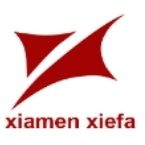
Food packaging plays an essential role in the preservation, protection, and transportation of food products. Several materials are used to produce food packaging, each with its advantages and disadvantages. The most common materials used in food packaging include polypropylene (PP), polyethylene terephthalate (PET), polystyrene (PS), and polyvinyl chloride (PVC). In this article, we will discuss the properties of these materials, their differences, and how they compare in terms of their advantages and disadvantages in a table.
Polypropylene (PP)
Polypropylene is a thermoplastic polymer that is used in a wide range of applications, including food packaging. PP is a popular choice for food packaging because of its excellent chemical resistance, durability, and thermal stability. It is also lightweight and has good clarity, making it an ideal material for clear packaging. PP is also microwaveable, making it a popular choice for food packaging that needs to be reheated.
Advantages of PP in Food Packaging:
1. Chemical Resistance: PP is resistant to most chemicals, making it an ideal material for food packaging.
2. Durability: PP is a durable material that can withstand repeated use, making it an ideal material for food packaging.
3. Thermal Stability: PP has excellent thermal stability, making it an ideal material for hot-fill applications.
4. Lightweight: PP is a lightweight material that makes it easy to transport and store.
Disadvantages of PP in Food Packaging:
1. Low Impact Resistance: PP has low impact resistance, making it unsuitable for products that are prone to damage during transportation.
2. Not Biodegradable: PP is not biodegradable, making it an environmental concern.
Polyethylene Terephthalate (PET)
Polyethylene terephthalate, commonly known as PET, is a plastic resin that is commonly used in food packaging. PET is a popular choice for food packaging because of its transparency, rigidity, and strength. It is also lightweight and has good gas and moisture barrier properties, making it an ideal material for food packaging.
Advantages of PET in Food Packaging:
1. Transparency: PET is a transparent material that allows consumers to see the contents of the package, making it an ideal material for clear packaging.
2. Strength: PET is a strong material that can withstand high stress and pressure, making it an ideal material for food packaging.
3. Lightweight: PET is a lightweight material that makes it easy to transport and store.
4. Gas and Moisture Barrier: PET has good gas and moisture barrier properties, making it an ideal material for food packaging.
Disadvantages of PET in Food Packaging:
1. Not Microwaveable: PET is not microwaveable, making it unsuitable for food packaging that needs to be reheated.
2. Environmental Concern: PET is not biodegradable and can take hundreds of years to decompose, making it an environmental concern.
Polystyrene (PS)
Polystyrene is a thermoplastic polymer that is used in a wide range of applications, including food packaging. PS is a popular choice for food packaging because of its clarity, rigidity, and insulation properties. It is also lightweight and has good impact resistance, making it an ideal material for food packaging.
Advantages of PS in Food Packaging:
1. Clarity: PS is a clear material that allows consumers to see the contents of the package, making it an ideal material for clear packaging.
2. Insulation: PS has good insulation properties, making it an ideal material for hot and cold food packaging.
3. Lightweight: PS is a lightweight material that makes it easy to transport and store.
4. Impact Resistance: PS has good impact resistance, making it an ideal material for products that are prone to damage during transportation.
Disadvantages of PS in Food Packaging:
Environmental Concern: PS is not biodegradable and can take hundreds of years to decompose, making it an environmental concern.
Low Chemical Resistance: PS is not resistant to many chemicals, making it unsuitable for some food packaging applications.
Polyvinyl Chloride (PVC)
Polyvinyl chloride, commonly known as PVC, is a synthetic plastic polymer that is used in a wide range of applications, including food packaging. PVC is a popular choice for food packaging because of its flexibility, strength, and durability. It is also lightweight and has good chemical and thermal stability.
Advantages of PVC in Food Packaging:
1. Flexibility: PVC is a flexible material that can be molded into various shapes and sizes, making it an ideal material for food packaging.
2. Strength and Durability: PVC is a strong and durable material that can withstand repeated use, making it an ideal material for food packaging.
3. Chemical and Thermal Stability: PVC has good chemical and thermal stability, making it an ideal material for food packaging that requires resistance to heat and chemicals.
4. Lightweight: PVC is a lightweight material that makes it easy to transport and store.
Disadvantages of PVC in Food Packaging:
1. Environmental Concern: PVC is not biodegradable and can take hundreds of years to decompose, making it an environmental concern.
2. Health Concern: PVC can release toxic fumes when burned, making it a health concern.
Comparison of PP, PET, PS, and PVC in Food Packaging:
In the following table, we will compare the properties of PP, PET, PS, and PVC in food packaging:
Conclusion:
In conclusion, the choice of material for food packaging depends on several factors, including the type of food, the method of packaging, and the desired properties. PP, PET, PS, and PVC are popular choices for food packaging, each with its advantages and disadvantages. PP is an ideal material for food packaging that requires chemical resistance, durability, and thermal stability. PET is suitable for food packaging that requires transparency, rigidity, and gas and moisture barrier properties. PS is an ideal material for food packaging that requires clarity, insulation, and impact resistance. PVC is an ideal material for food packaging that requires flexibility, strength, and chemical and thermal stability. However, it is important to note that all of these materials have environmental concerns, and efforts should be made to reduce their impact on the environment.
